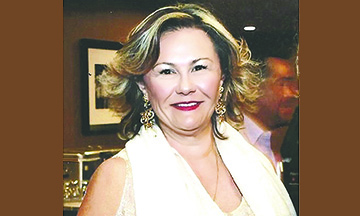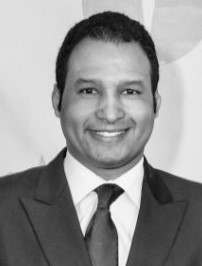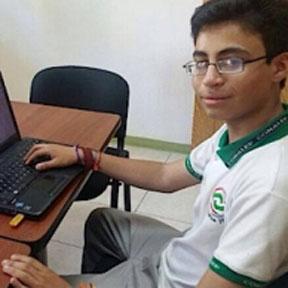
Del Escritorio de la Alcaldesa Lupe Ramos Amith
4to Distrito de la Ciudad de Indio (Distrito Polo Sur)
Para ver los Limites del Mapa de Distrito visite: https://gis.indio.org/city/districtmap/
La ciudad de Indio recientemente resolvió transicionar de su Sistema actual de elecciones sin limitación, a un sistema de elección basado en distritos. Los sistemas de elecciones basados en distritos son resultado de la Ley de Derechos de Votaciones de California (CVRA), la cual fue promulgada en el 2001 para o para abordar las diferencias entre demografía étnica y oficiales electos. Aquí presento más detalles sobre este proceso.
P: ¿Qué significa esto?
R: En el 2018 la Ciudad de Indio tenía un Sistema de elecciones llamado “elecciones sin limitaciones.” Este es un Sistema en el cual todos los votantes en la ciudad, votan por el concilio entero. La Ciudad resolvió transicionar de este Sistema, a un Sistema de elecciones basadas en distrito en la cual candidatos al concilio de la ciudad de distritos geográficos específicos son elegidos solo por votantes en su distrito.
P: ¿Porque han decidido hacer esto ahora?
R: La CVRA especifica que las municipalidades que tienen poblaciones de 100,000 o mayores, deben transicionar a elecciones basadas en distrito. Aunque la población es de 89,000 y aún no ha alcanzado este nivel, proyectamos que en un futuro cercano lo hará, y por eso estamos cambiando a este sistema requerido ahora.
P: ¿Porqué son una mejor solución las elecciones basadas en distrito?
R: Nuestra meta en este proceso es que cada residente y comunidad de interés en la Ciudad de Indio sea totalmente representada en el proceso municipal de votaciones por oficiales electos. Elecciones basadas en distrito aseguran que los puntos de vista de cada residente, grupo étnico, y otras comunidades, será escuchado y se reflejará en el proceso de elección.
P: ¿Eso quiere decir que en el Sistema actual los grupos étnicos y otras minorías no han tenido una voz?
R: para nada. La Ciudad de Indio se enorgullece en la diversidad y en proporcionar servicios municipales excepcionales para mejorar la calidad de vida de todos sus residentes. Este nuevo sistema de elección ejemplifica más allá nuestro compromiso por asegurar que todas las voces de la comunidad tengan una opinión equitativa en el proceso de elección.
P: ¿Cómo fueron determinados los distritos?
R: Un especialista en demografía independiente revisó todos los datos demográficos de la ciudad e identificó cinco distritos que reflejan la diversidad étnica y demográfica de cada distrito. A la vez, la Ciudad sostuvo una serie de audiencias públicas acerca de este proceso, y reunió comentarios de la comunidad.
P: ¿Que se utiliza como medida para crear un distrito?
R: Cuando se crea cada distrito, la Ciudad miro cuidadosamente la topografía, Geografía, cohesidad/compactidad, y comunidades de interés en los distritos para asegurar que cada distrito sea un reflejo preciso de los residentes en ese distrito.
P: ¿Como fueron nombrados los distritos?
R: Los distritos simplemente están numerados (tal como Distrito 1, Distrito 2, etc.)
P: ¿Esto quiere decir que los votantes solamente podrán votar por su candidato de distrito?
R: Si. Anteriormente cualquier residente de la Ciudad de Indio podía votar por cualquier candidato postulado para el Concilio de la Ciudad. Bajo este nuevo Sistema, los residentes de un distrito solo votaran por los candidatos representando a ese distrito.
P: ¿Los candidatos serán asignados a distritos?
R: Cada distrito nominará sus propios candidatos para su distrito y cualquier candidato calificado puede postularse. Los candidatos no serán asignados a un distrito.
P: ¿Esto quiere decir que el candidato debe vivir en el distrito que representa?
R: Si.
P: ¿Una vez que los distritos sean formados, cambiaran? Si es así, ¿hay un periodo especifico de revisión para ver los límites de distrito?
R: Anticipamos que revisaremos los limites distritales cuando tengamos suficiente información para utilizar (tal como el próximo censo nacional).
P: ¿Esto impacta la posición de la Alcaldía?
R: No. La Ciudad de Indio rota el papel de alcalde con todos los Miembros electos del Concilio de la Ciudad. Esto quiere decir que los miembros del Concilio de la Ciudad de cada distrito, eventualmente asumirán la posición de Alcaldía, así que este sistema de elección de distrito no cambiará ese proceso.
BIOGRAFIA:
Lupe Ramos Amith, Alcaldesa y Miembro del Concilio de la Ciudad de Indio ha servido a los residentes de Indio desde el 2014 y ha servido como Alcaldesa en el 2008, 2011, 2015 y 2019. Lupe Ramos Amith tiene raíces profundas en su comunidad. Sus padres fueron inmigrantes que trabajaron en la comunidad agricultora, y ella asistió a la Indio High School. Obtuvo un título del Colegio del Desierto en Artes Liberales. Además, tiene un trasfondo extenso como empresaria, activista comunitaria, y voluntaria. Es presidenta de numerosos comités y miembro de múltiples junas directivas. No es nueva trabajando con equipos, oficiales electos, e individuos nombrados para lograr metas de bienestar común. La Concejal Ramos Amith ha puesto esa experiencia al servicio del Concilio de la Ciudad donde ella constantemente aboga por presupuestos balanceados y gastos responsables.
Contacte a Lupe en LRamosAmith@Indio.org
From the Desk of Mayor Lupe Ramos Amith
City of Indio 4th District (Southern Polo District)
To View the City of Indio’s District Map Boundaries visit: https://gis.indio.org/city/districtmap/
The City of Indio recently resolved to transition from its current system of at-large elections to a district-based election system. District-based election systems are a result of the California Voting Rights Act (CVRA), which was enacted in2001 to address disparities between ethnic demographics and elected officials. Here are some more details about this process.
Q: What does
this mean?
A: In 2018 the City of Indio had an election system called “at-large elections.” This is a system in which all voters in the city vote for the entire city council. The City resolved to transition from this system to a district-based election system in which city council candidates from specified geographic districts are elected only by voters within their district.
Q: Why have you decided to do this now?
A: The CVRA specifies that municipalities that have populations of 100,000 or greater are required to transition to district-based elections. While the City’s population of more than 89,000 has not yet reached that level, we project it will in the near future and so we are transitioning to this required system now.
Q: Why are district-based elections a better solution?
A: Our goal in this process is that every resident and community of interest in the City of Indio will be fully represented in the municipal voting process for elected officials. District-based elections ensure that the views of every resident, ethnic group and other communities
will be heard and reflected in the election process.
Q: Does this mean that in the current system ethnic and other minority groups have not had a voice?
A: Not at all. The City of Indio prides itself on its diversity and providing outstanding municipal services to enhance the quality of life for all of our residents. This new election system further exemplifies our ongoing commitment to ensuring that all voices in the community have equal say in the election process.
Q: How were the districts determined?
A: An independent demography specialist reviewed all of the demographics of the city and identified five districts that reflect the ethnic and demographic diversity of each district. At the same time, the City held a series of public hearings about this process and gather input from the community.
Q: What was used as metrics to create a district?
A: When creating each district, the City carefully looked at topography, geography, cohesiveness/compactness, and communities of interest in the districts to ensure that each district is a fair and accurate reflection of the residents in that district.
Q: How were the districts named?
A: The districts are simply numbered (such as District 1, District 2, etc.)
Q: Does this mean voters in a district will only get to vote for their district candidate?
A: Yes. Previously any resident of the City of Indio was able to vote for any candidate running for City Council. Under this new system, the residents of a district will only vote for candidates representing their district.
Q: Will candidates be assigned to districts?
A: Each district will nominate their own candidates for their district and any qualified candidate is encouraged to run. Candidates will not be assigned to districts.
Q: Does this mean that the district candidate must live in the district they represent?
A: Yes.
Q: Once the districts were drawn up, will they change? If so, is there a specific review period for looking at the district boundaries?
A: We anticipate that we will review the district boundaries when we have significant new data to use (such as the next national Census).
Q: Does this impact the Mayoral position?
A: No. The City of Indio rotates the role of Mayor to all elected City Council Members. This means that City Council members from each district will eventually assume the Mayoral position, so this district-based election system will not change that process.
BIO:
Lupe Ramos Amith, Mayor and Member of the Indio City Council has served the residents of Indio since 2014 and has served as Mayor in 2008, 2011, 2015 and 2019. Lupe Ramos Amith has deep roots in her community. Her parents were immigrants working in the agricultural community, and she attended Indio High School. She earned an Associate of Liberal Arts degree from the College of the Desert. She also has an extensive background as a businesswoman and community activist, and volunteer. She chairs numerous committees and sits on multiple boards. She is no stranger to working with teams, elected officials, and appointed individuals to achieve goals for the common good. Councilmember Ramos Amith has put that experience to use in her City Council duties where she is a consistent advocate for balanced budgets and responsible spending.
Contact Lupe at LRamosAmith@Indio.org

























